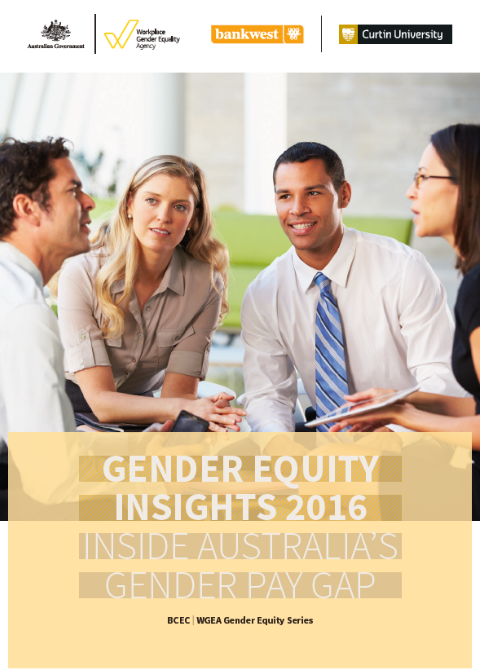Bankwest Curtin Economics Centre, in collaboration with the Workplace Gender Equality Agency, has today released a report demonstrating that amongst top tier managers in Australian organisations, men are paid on average $100,000 per year more than women.
The new report Gender Equity Insights 2016: Inside Australia’s Gender Pay Gap also reveals for the first time a measurable link between increased gender diversity on governing boards and lower pay gaps for managers.
Data collected by the Workplace Gender Equality Agency (WGEA) and analysed by the Bankwest Curtin Economic Centre (BCEC) explores gender pay gaps across industries, occupations and management levels. The report also presents WGEA’s part-time and casual pay data for the first time.
Key findings of the report include:
- Female Key Management Personnel (KMP) working full-time earn on average $100,000 a year less than male KMPs on total remuneration, with women earning on average $244,569 and men earning $343,269.
- If women and men move through managerial positions at the same pace, working full-time and reaching a KMP role in their tenth year, men can expect to earn $2.3 million and women $1.7 million in base salary over this period – a difference of $600,000.
- Increasing the share of women on boards from zero to 50:50 is associated with a 6.3 percentage point reduction in the gender pay gap for full-time managers
- Managerial gender pay gaps are smaller in male-dominated industries than female-dominated industries.
- Gender pay gaps for part-time employees are highly variable and overall marginally favour women; however, gender pay gaps for part-timers favour men in more senior and highly paid roles.
- Part-time roles are dominated by women and are significantly lower paid (on a full-time equivalent basis) than full-time roles.
- Men earn proportionately more in additional remuneration than women, leading to an average male ‘bonus’ premium of almost eight percentage points for full-time workers.
Report author, Bankwest Curtin Economics Centre Associate Professor Rebecca Cassells, said there were many contributing factors to gender pay gaps, including discrimination.
“Large and persistent gender pay gaps amongst managers suggest behaviours at senior levels of Australian organisations that result in preferential recruitment and wage treatment of men over women,” Associate Professor Cassells said.
“This is further evidenced by the greater additional remuneration that men receive, compared to women, beyond their base salary in the form of bonuses and other discretionary pay.”
WGEA Director Libby Lyons said diverse and inclusive workplaces encouraged participation, generated better decision-making and improved productivity.
“This report shows that all industries, including female-dominated industries, have work ahead of them to improve gender pay equity,” Ms Lyons said.
“I urge all employers to look closely at their own pay data and recruitment strategies to uncover and address gender pay gaps.”
BCEC WGEA Gender Equity Insights 2016 (PDF, 12.65 MB)
Our 2016 report in conjunction with Bankwest Curtin Economics Centre analyses WGEA reporting data relating to gender pay gaps and explores trends and contributing factors.
The report shows that greater representation of women on Boards is associated with a significant reduction in the gender pay gap.
